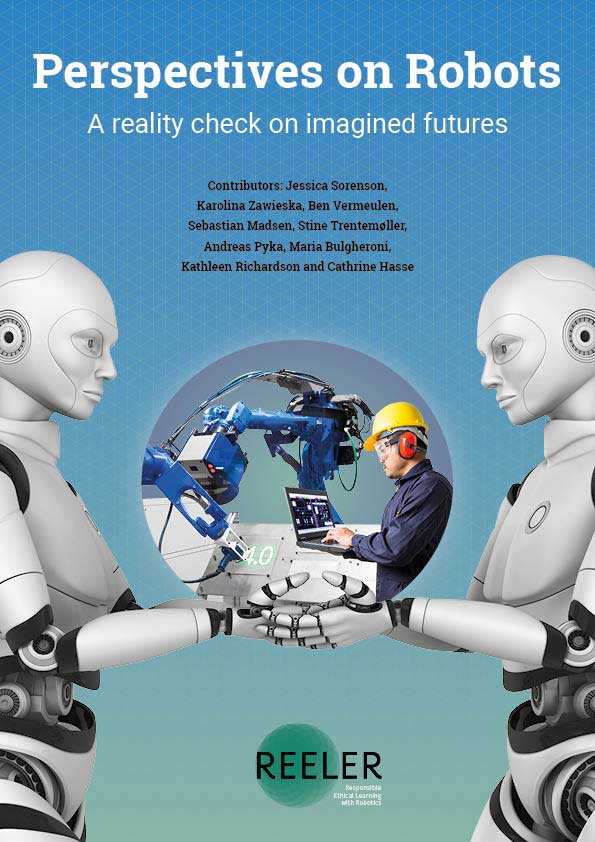A Reality Check on Imagined Futures
Perspectives on Robots
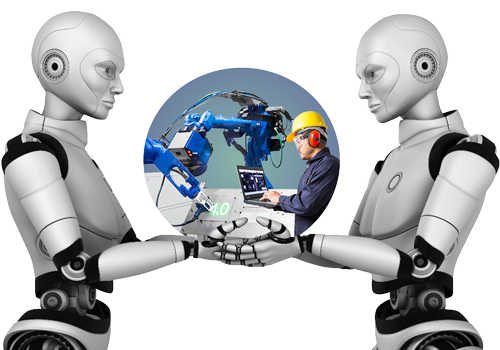

Not a traditional ‘roadmap’
This website presents the results of the project REELER (Responsible Ethical Learning in Robotics), as a roadmap for closing the gap between users and designers of robots. This is no traditional roadmap. You can take as many detours as you like. The main point is to raise awareness through our different contributions. At the bottom of each page is the REELER Roadmap, with different waypoints for navigating your way through responsible robotics, including:
- Toolbox: A number of fun awareness-raising tools, including the BuildBot board game.
- Outreach: New methods for engaging with different stakeholder groups, as well as policy recommendations.
- Research: Our methodology and findings, including an interdisciplinary publication that brings a reality check on robots and presents an expanded notion of the user.
- About REELER: Meet the whole interdisciplinary team behind this site and an overview of our main objectives.
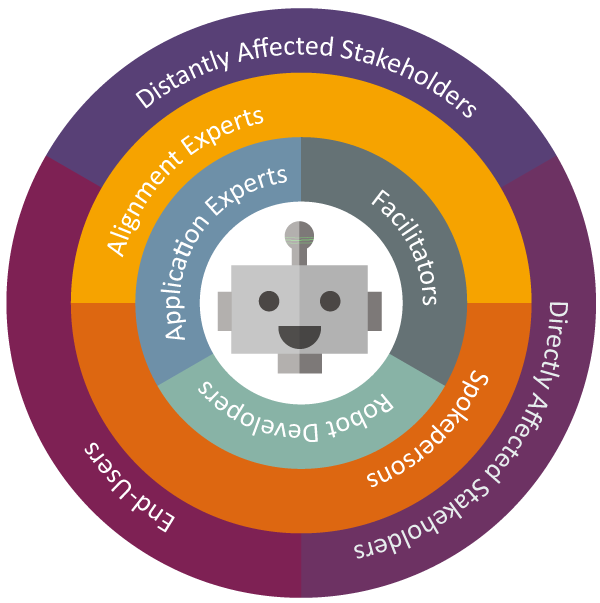

Expanding notions of robots and users
Our futures with robots do not resemble the fantastic imaginaries in science fiction and popular media. Robots are made by real people in real places, and they will affect real people in real places. Robot development requires collaboration and complex relations between those who make robots and those who are affected by them. REELER has developed a model to explain this complexity, and to show the gaps between the robot makers (facilitators, robot developers, application experts) and affected stakeholders (end users, directly and distantly affected stakeholders).
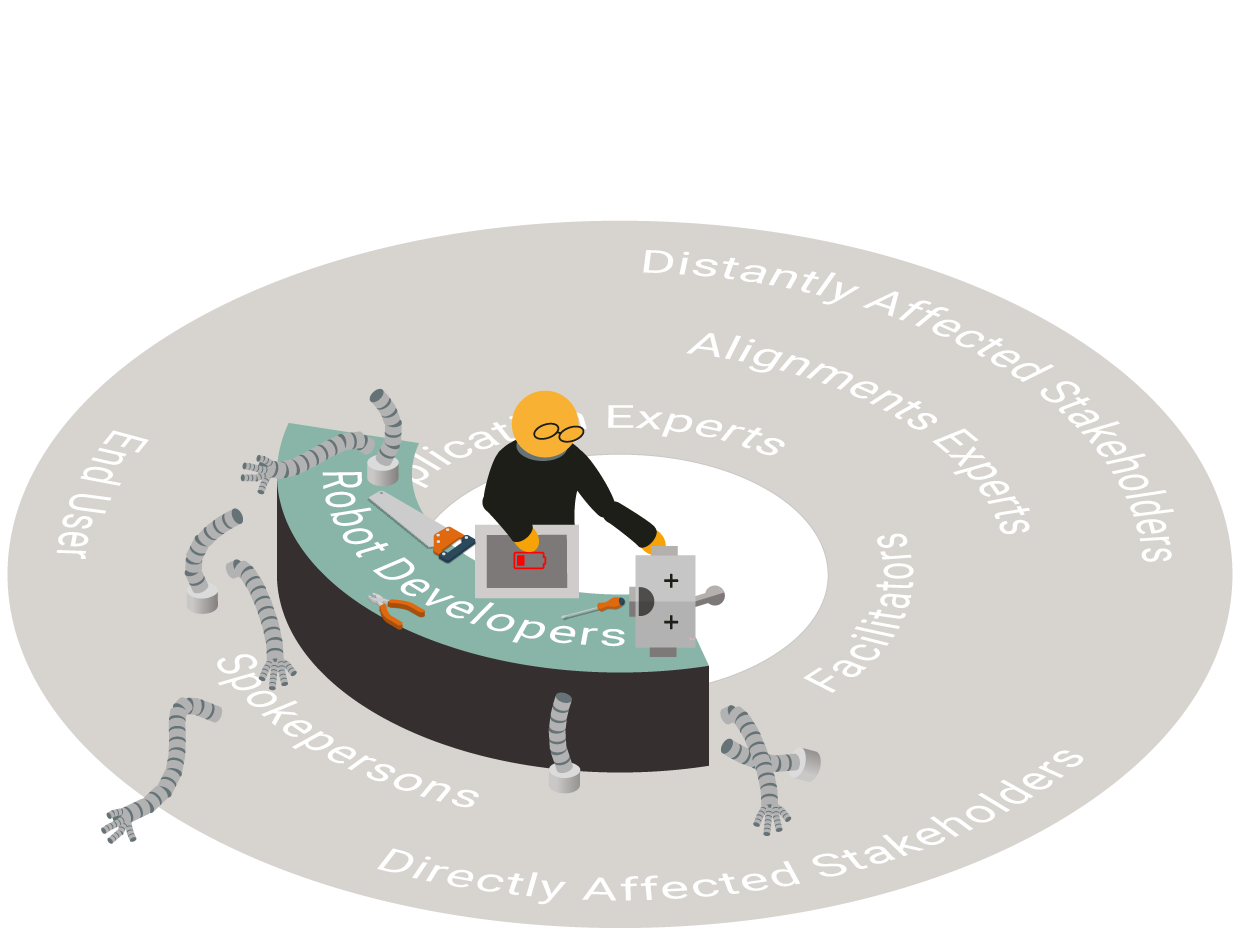

Robot Developers:
- Mechanical engineers
- Computer scientists
- Industrial designers
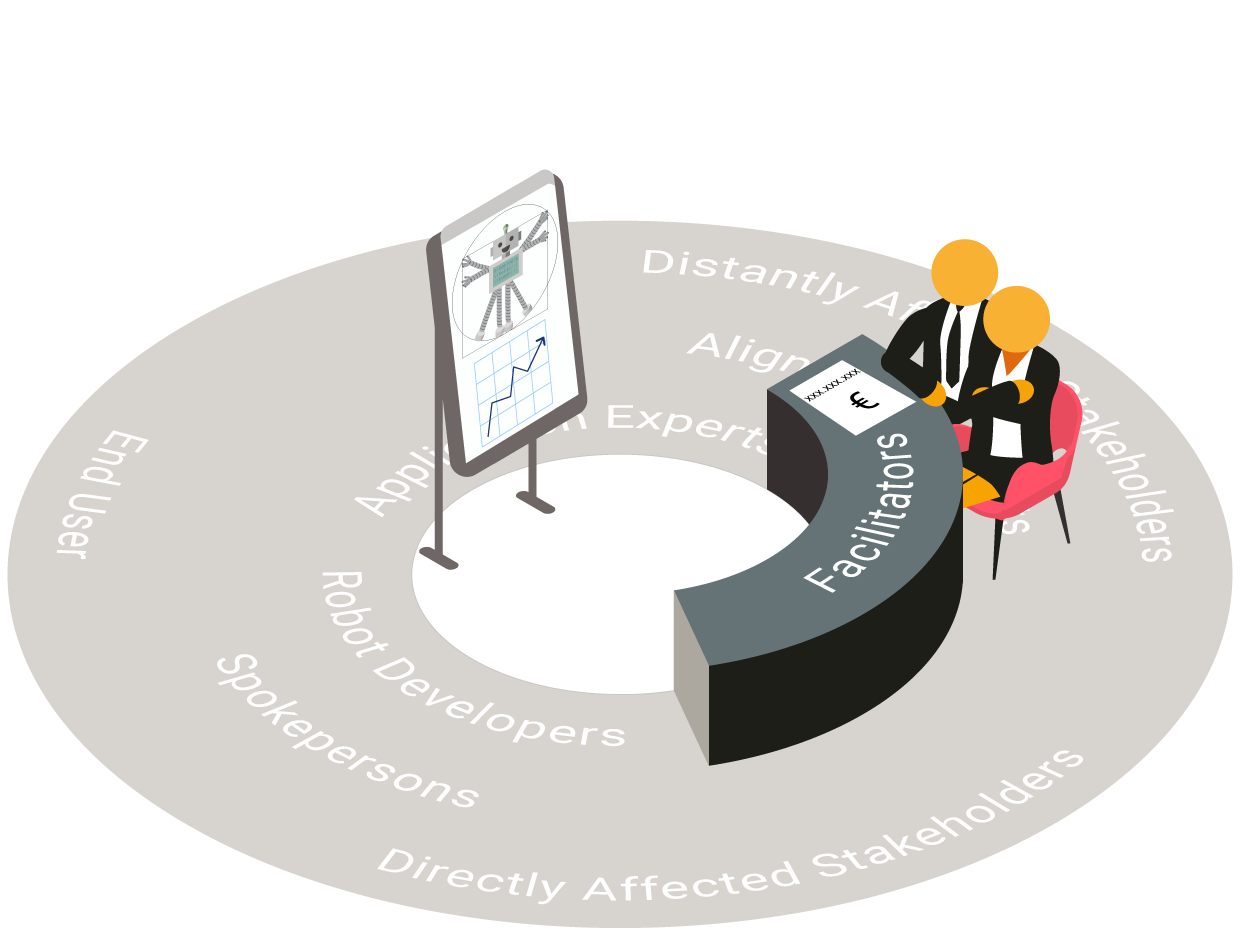

Facilitators:
- Funding
- Regulatory agencies
- Lawyers
- Marketing or public-relations
- Politicians
Decision-makers whose role is to set the framework for development. This includes people with legal, regulatory, or bureaucratic expertise, but also persons who otherwise facilitate the funding, access to market, or testing.
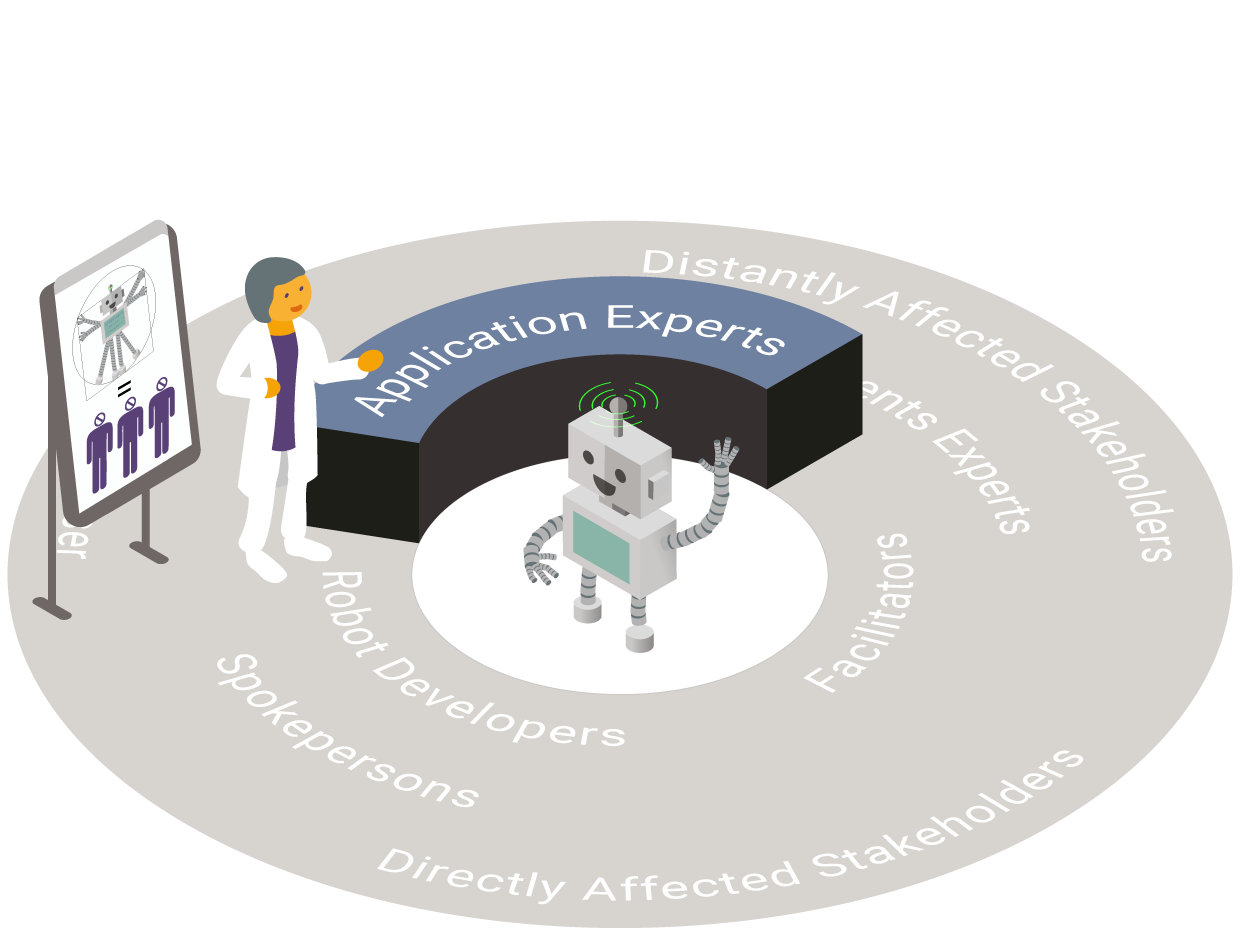

Application Experts:
- A building developer for a construction robot
- A dairy owner for a milking robot
People with an expertise in the application area or sector particular to the robot under development. They have a role of sharing their expertise with developers, and are often robot buyers.
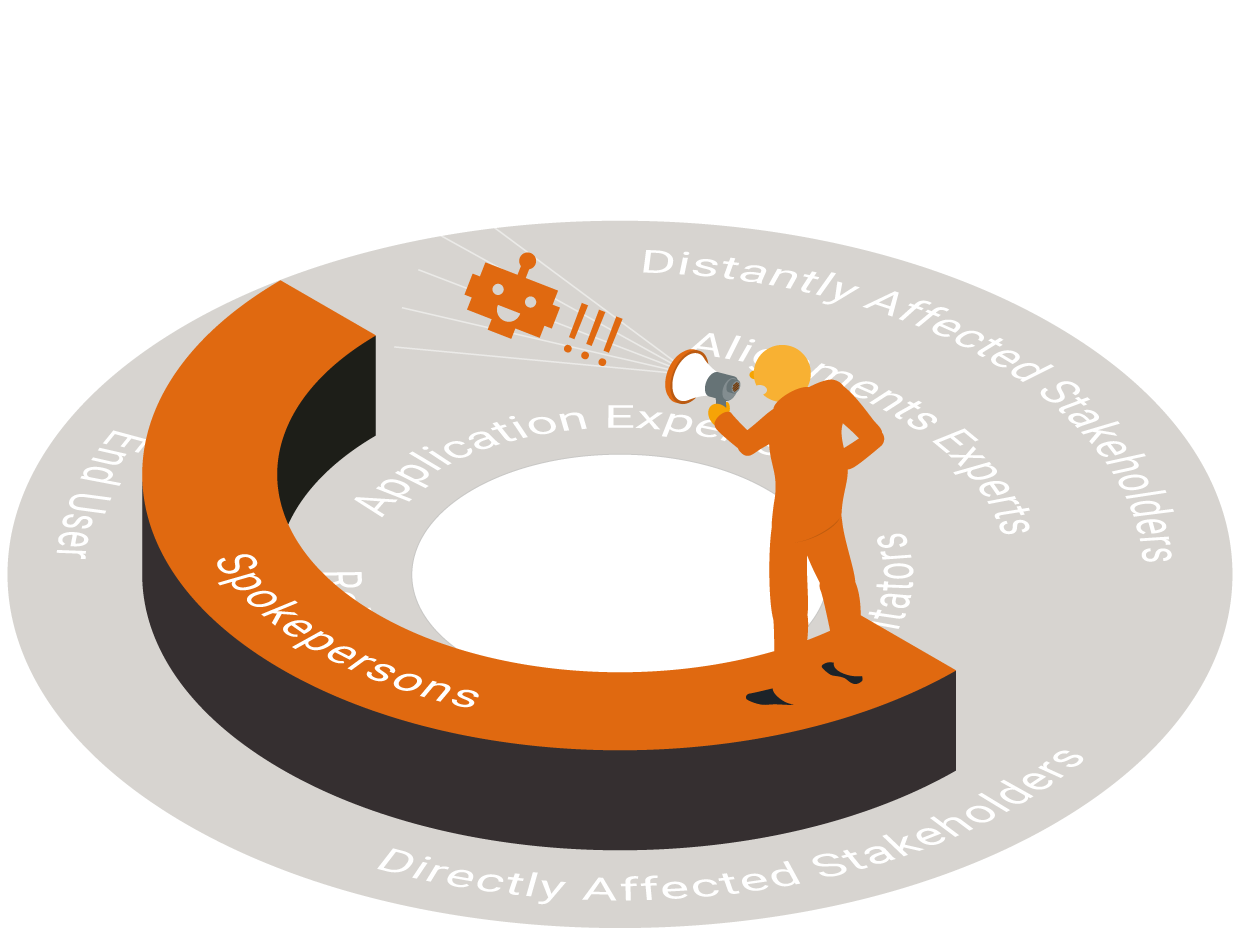

Spokepersons:
- Factory owner speaking on
behalf of the workers
An intermediary who speaks on behalf of recipients based on their own experiences. Often these people are management level in the same organization as the end-users.
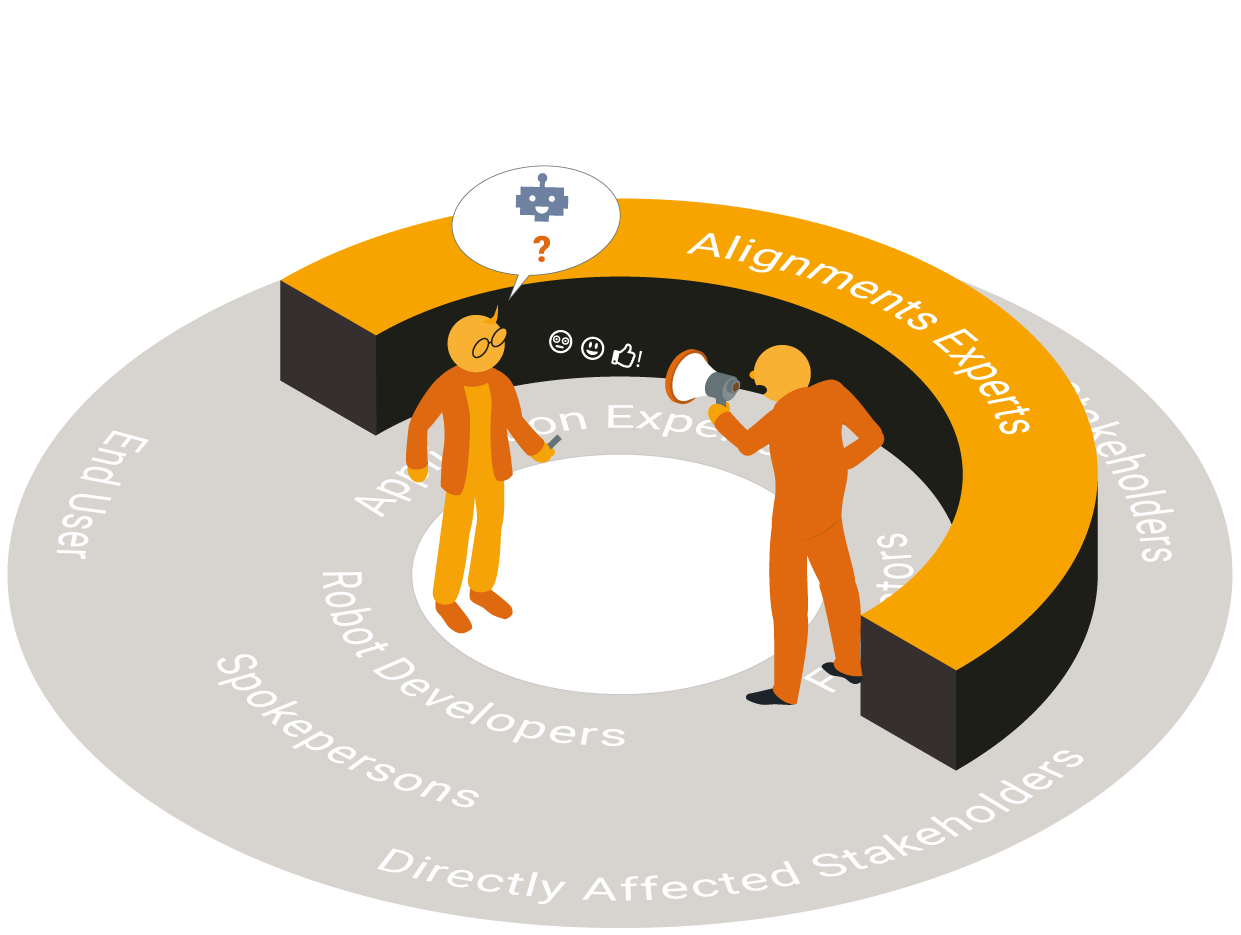

Alignment Experts:
- Anthropologists
- Ethicists
Intermediaries seeking to align robot makers and affected stakeholders based on
empirical knowledge of both. Often these people have an expertise in Social Sciences or Humanities (SSH).
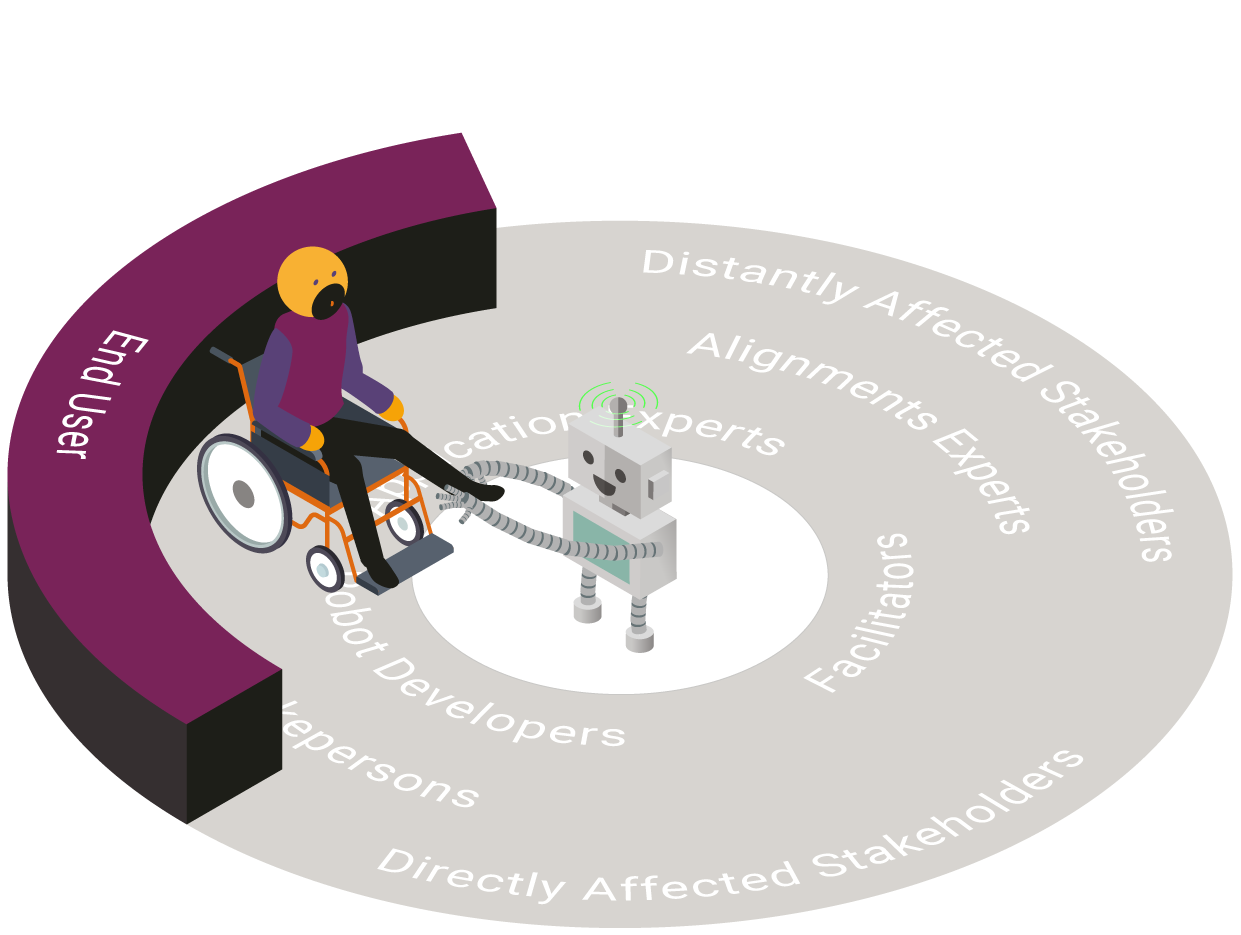

End-Users:
- Patient using a rehabilitation robot
- Machine operator at a factory
- Consumer using a robotic vacuum
People who will use (operate or interact
with) the robot directly.
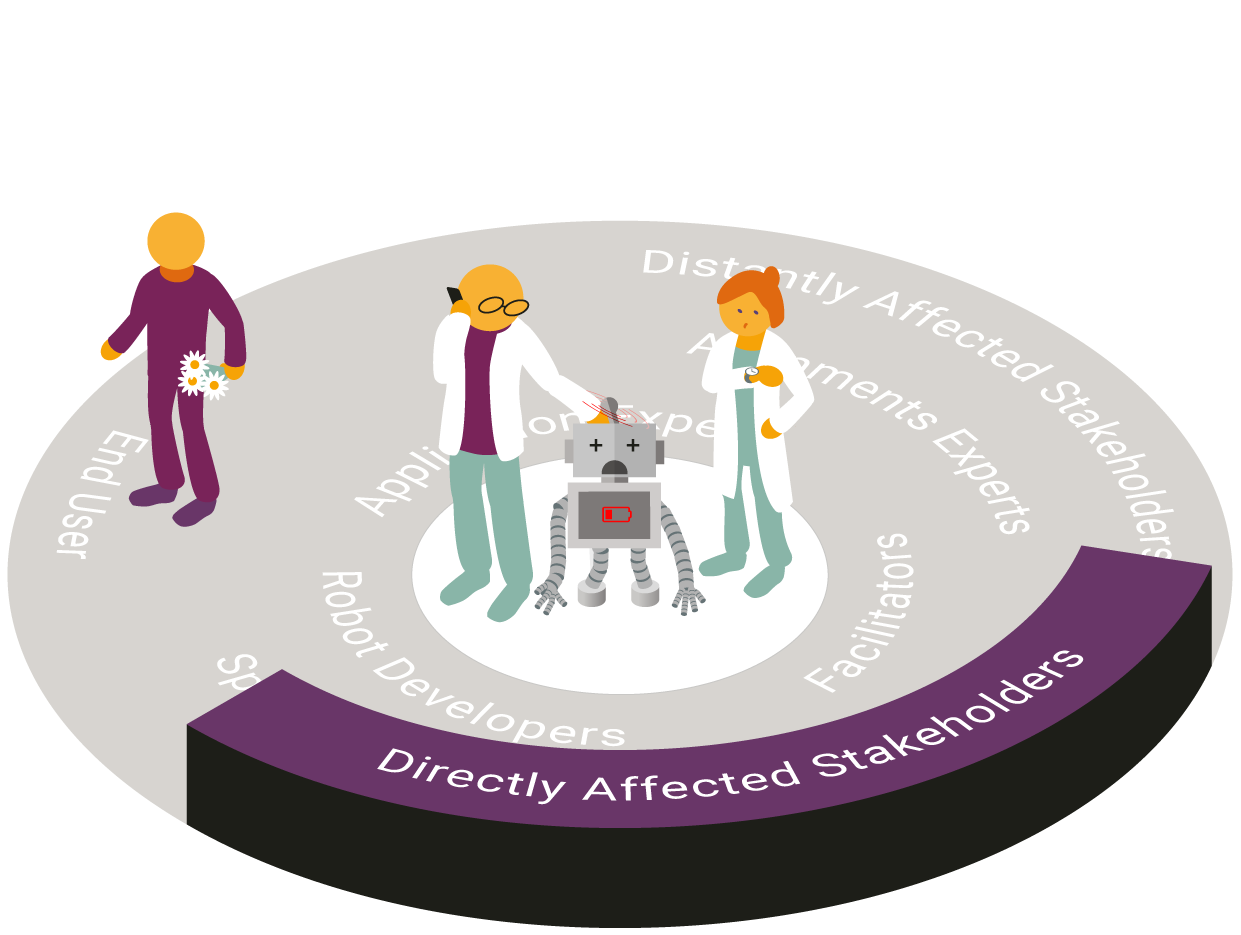

Directly Affected Stakeholders:
- Family member assisting patient with use of a rehabilitation robot
- Nurse interacting with a cleaning robot.
Non-users who encounter the robot and are affected by it.
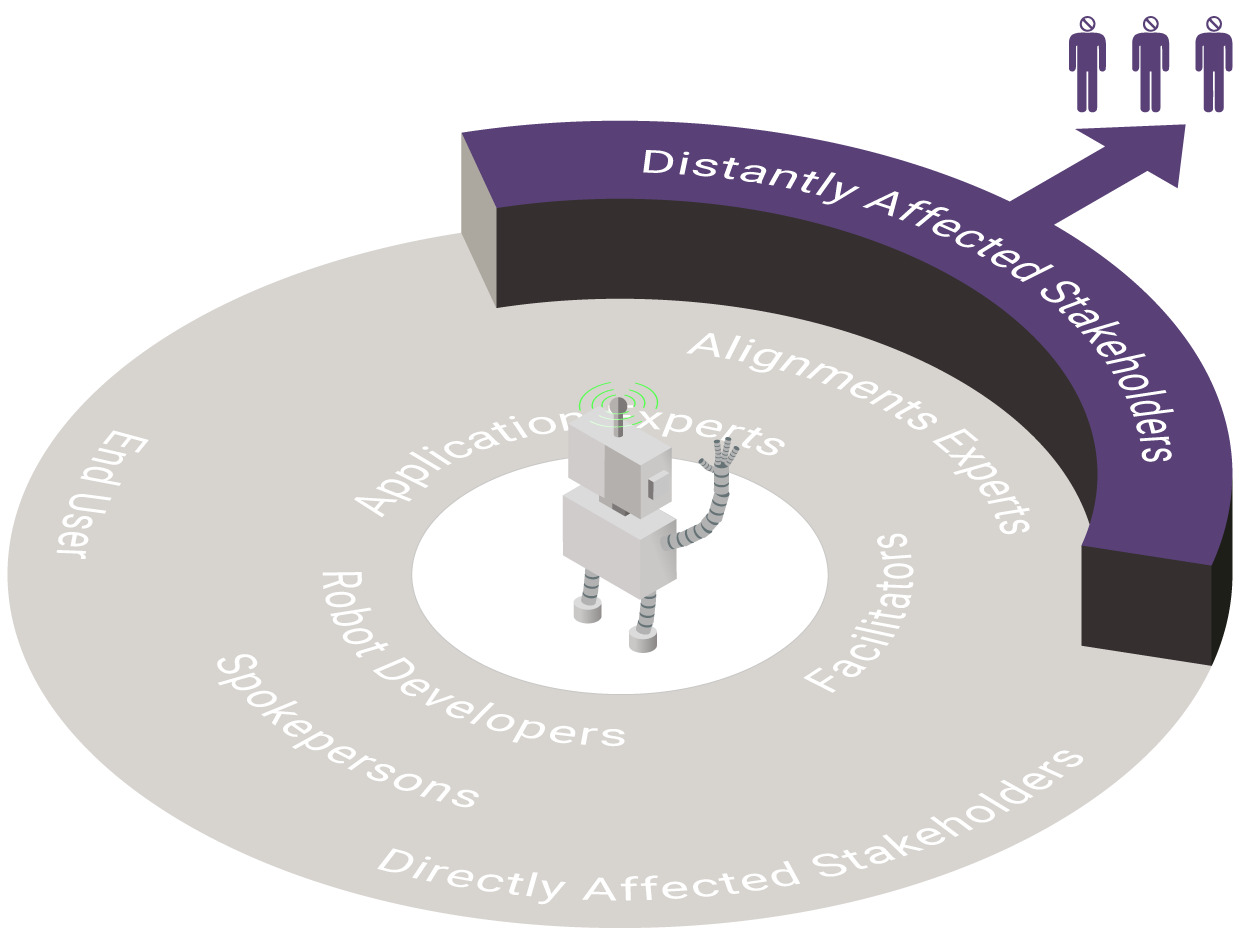

Distantly Affected Stakeholders:
- Physiotherapist
made superfluous. - Farmworker on a traditional farm (not practicing precision-farming)
People who will likely never operate, use, or interact directly with the robot, but may nevertheless be affected by it.
An interdisciplinary publication for the wider robotics community
In this publication, we present the human proximity model and our main findings on normativity, meaningful work, innovation networks, imaginaries, and the inner circle of robot development.
Browse individual chapters online, or download the entire publication!

